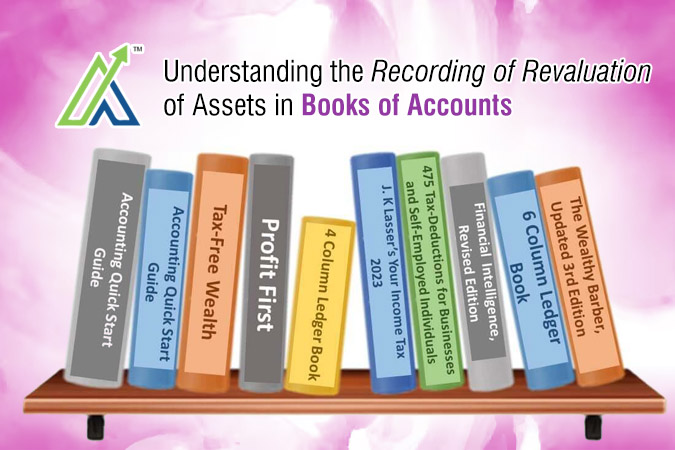Let’s imagine that you’re the CFO of a textile company in Mumbai. You have noticed significant fluctuations in the market value of your factory’s land over the last few years. How do you ensure your financial statements accurately reflect these changes? That’s when the asset revaluation comes into play.
What is Asset Revaluation?
It can be defined as the revaluation of an asset’s book value to its current market value. This process is vital to determining the change in the market value of assets over time. Assets like land, buildings, machinery, etc. can change over time due to market conditions, inflation, and technical advancements.
Why is Revaluation Important?
Revaluation helps companies reflect the true value of assets and view their financial performance from their balance sheet. It also helps stakeholders such as investors, creditors, and management make decisions by having an impact on financial metrics and ratios.
When Should Revaluation be Done?
In India, companies typically revalue their assets in situations such as:
- Before a merger or acquisition to present the true value of assets.
- Periodically, to keep financial statements up to date.
- When there is a significant change in the market value of assets.
Steps to Record Revaluation of Assets
Here are required steps to record revaluation of Assets: –
1. Determine the Fair Value
Appraisers or market use can determine the asset’s fair value first. For example, if a company has some land in Mumbai, it will hire appraisers for properties who can determine the current market value.
2. Compare Fair Value with Book Value
Next, compare the fair value with the asset’s current book value; if higher, an upward revaluation is in place; otherwise, it is a downward revaluation. For instance, a pharma company based in Hyderabad may realize that its machinery’s fair value has now increased to 15 lakhs against its existing book value of 10 lakhs.
3. Record the Revaluation
This step involves recording both upward and downward revaluations.
Upward Revaluation: Debit the asset account and credit the revaluation reserve. Example: If a building in Bangalore is revalued from ₹50 lakhs to ₹70 lakhs:
- Debit Building Account: ₹20 lakhs
- Credit Revaluation Reserve: ₹20 lakhs
Downward Revaluation: Debit the revaluation reserve (if available) or profit & loss account, and credit the asset account. Example: If the building’s value drops to ₹40 lakhs:
- Debit Revaluation Reserve/Profit & Loss Account: ₹10 lakhs
- Credit Building Account: ₹10 lakhs
4. Adjust Depreciation
When revaluing an asset, it’s important to include depreciation in the revalued amount to ensure a correct financial representation. For instance, if the revaluation is for a manufacturing unit located in Chennai that has revalued its machinery, the calculation of the new value-carrying amount regarding depreciation will be required.
Example: Revaluation of Machinery
Let’s cite the case of one manufacturing company in Pune. The company has machinery valued at ₹ ten lakhs, bought in the past. Five years later, it is considered a revaluation, and the fair market value comes out to be ₹12 lakhs. The current book value of the machinery, in terms of depreciation, is ₹ eight lakhs. The revaluation will be recorded by debiting the Machinery Account by ₹400,000 and crediting the Revaluation Reserve by ₹400,000. This revaluation will enhance the value of the company’s assets according to the balance sheet and simultaneously create a revaluation reserve under equity for machinery with a higher value.
Questions to Understand your ability
Q 1:What is asset revaluation?
- Recording the historical cost of an asset
- Assessing the book value of an asset at the time of purchase
- Updating an asset’s book value to its current market value
- Calculating the depreciation of an asset
Q 2: Why is asset revaluation important?
- It ensures assets are insured correctly
- It helps companies reflect the true value of assets and impacts financial metrics and ratios
- It determines the tax liability of a company
- It is required for legal compliance in all countries
Q 3: In which situations do companies in India typically revalue their assets?
- Before purchasing new equipment
- Before a merger or acquisition, periodically, and when there is a significant change in market value
- Before filing annual tax returns
- Before hiring new employees
Q 4: What are the steps to record an upward revaluation of an asset?
- Debit the revaluation reserve and credit the asset account
- Debit the asset account and credit the revaluation reserve
- Debit the profit & loss account and credit the asset account
- Debit the asset account and credit the profit & loss account
Q 5: What should be done after revaluing an asset?
- The asset should be sold immediately
- The asset should be depreciated based on its new value
- The asset’s revaluation should be ignored in financial statements
- The asset’s historical cost should be restored in the books
Conclusion
Asset revaluation is another business modifier that shows the real picture of financial health. Following the abovementioned steps, companies can ensure their financial statements reflect the true value of these assets. In the Indian context, where market values could vary substantially, very regular revaluation could indicate a more accurate financial outlook to the benefit of both the company and its stakeholders.

